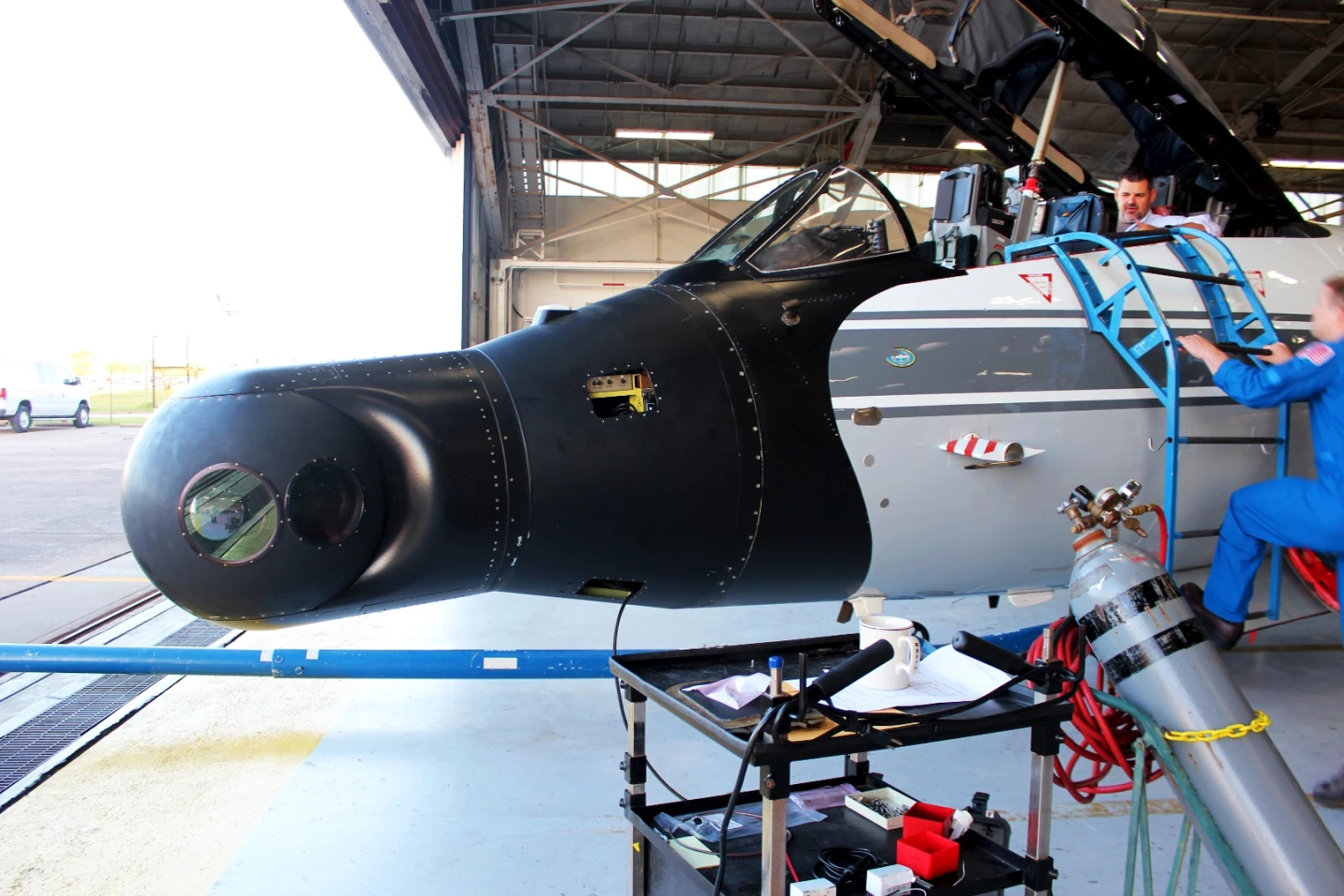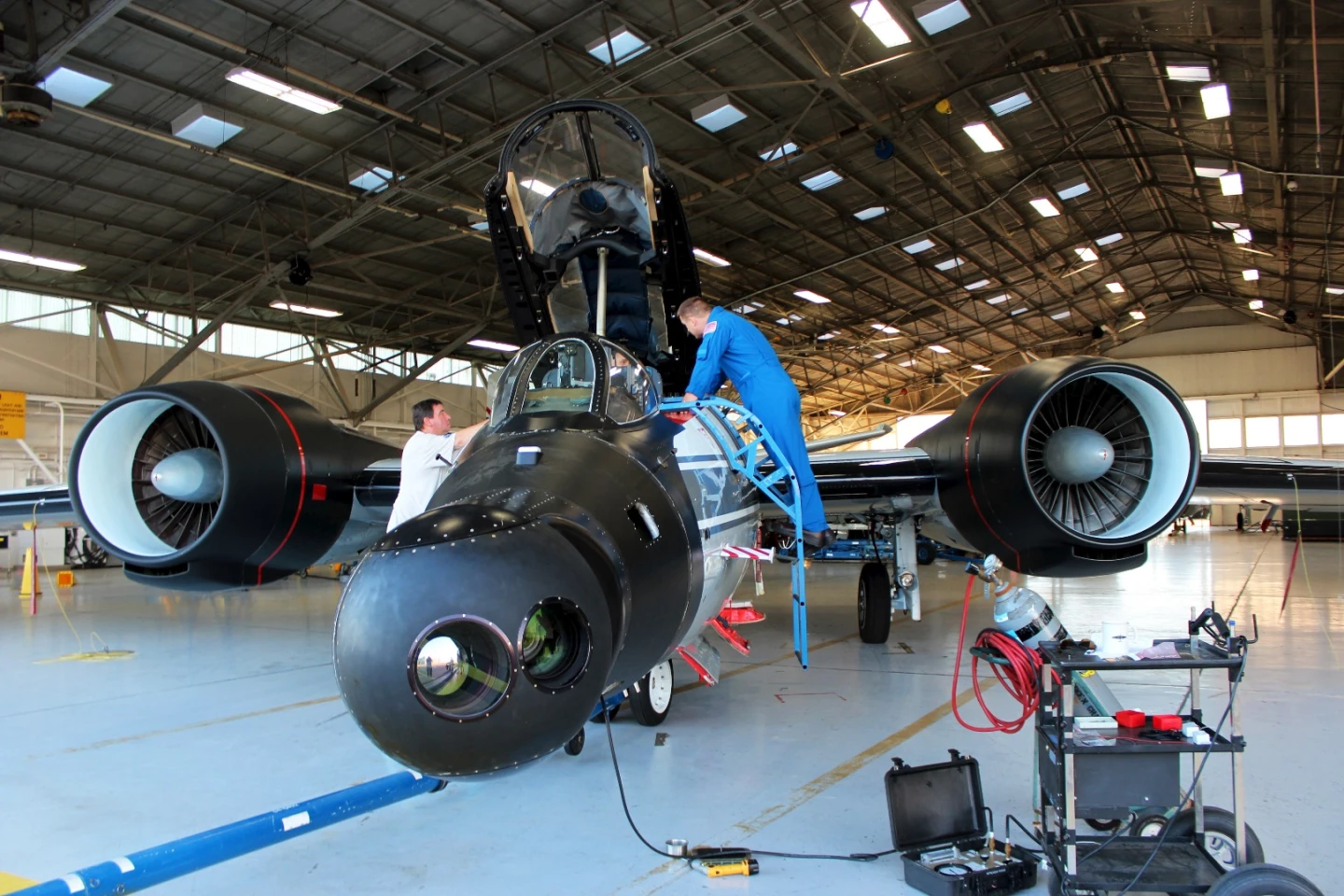When you're a mere mortal, watching the solar eclipse that will cut a path over the United States on August 21 will likely involve standing in a field looking up through a pair of flimsy paper sunglasses. When you're NASA-funded scientist however, watching the eclipse will entail soaring through the sky in jets outfitted with two high-tech telescopes mounted on their noses.
That's exactly what Amir Caspi of the Southwest Research Institute in Boulder, Colorado, and his team will do on the August afternoon that the eclipse begins. And although it sounds like the joy ride of a lifetime, there will actually be some serious science going on.
The mission will see two of NASA's retrofitted WB-57F jets riding in tight formation beneath the moon's shadow for three-and-a-half minutes — a bump from the two-and-a-half minutes ground-based viewers will get. During that time, they'll be capturing incredibly detailed images of the sun's corona as well as the first-ever thermal images of Mercury as they soar along in the stratosphere at 50,000 feet, the second major layer of our atmosphere. From there the sky is 20-30 times darker than on the ground, so the instruments will have an even better shot at grabbing useful images.
"These could well turn out to be the best ever observations of high frequency phenomena in the corona," said Dan Seaton, co-investigator of the project and researcher at the University of Colorado in Boulder, Colorado. "Extending the observing time and going to very high altitude might allow us to see a few events or track waves that would be essentially invisible in just two minutes of observations from the ground."

One of the mysteries the team is hoping to unravel is why the corona, the sun's outermost layer, is millions of degrees hotter than photosphere – the visible surface of the sun below it. One theory is that tiny explosions known as nanoflares could be warming the corona. But, because we can't easily observe this section of the sun during normal conditions, the theory has been difficult to prove. According to NASA, the high-definition images the jets will capture – to the tune of 30 frames per second – may just reveal them by showing if waves in the corona travel towards or away from the sun.
"We see the evidence of nanoflare heating, but we don't know where they occur," Caspi said. "If they occur higher up in the corona, we might expect to see waves moving downwards, as the little explosions occur and collectively reconfigure the magnetic fields."
The examination of the corona may also reveal the presence of a group of asteroids known as vulcanoids, a batch of space rocks hypothesized to be left over from the solar system's formation, although they've never actually been witnessed.

The blocking of the sun by the moon will also give the jet-based telescopes a chance to look at Mercury, which stays relatively close to the sun as it revolves in the solar system. The goal is to determine how quickly the planet cools from its daytime highs of around 800 degrees Fahrenheit (430 degrees Celsius) to the evening lows of about -280 degrees Fahrenheit (-170 degrees Celsius).
The jets the researchers will be using are two of NASA's three WB-57 craft, a model NASA has been operating since 1968.
This mission is part of a group of 11 research initiatives the space agency will be carrying out during the total solar eclipse.
The band of the eclipse's totality is about 70 mi wide (113 km), and it will stretch from Oregon to South Carolina. NASA has made a series of maps available showing the route of the event, which is the first eclipse to cross over the United States from Pacific to Atlantic in 99 years.
Source: NASA







